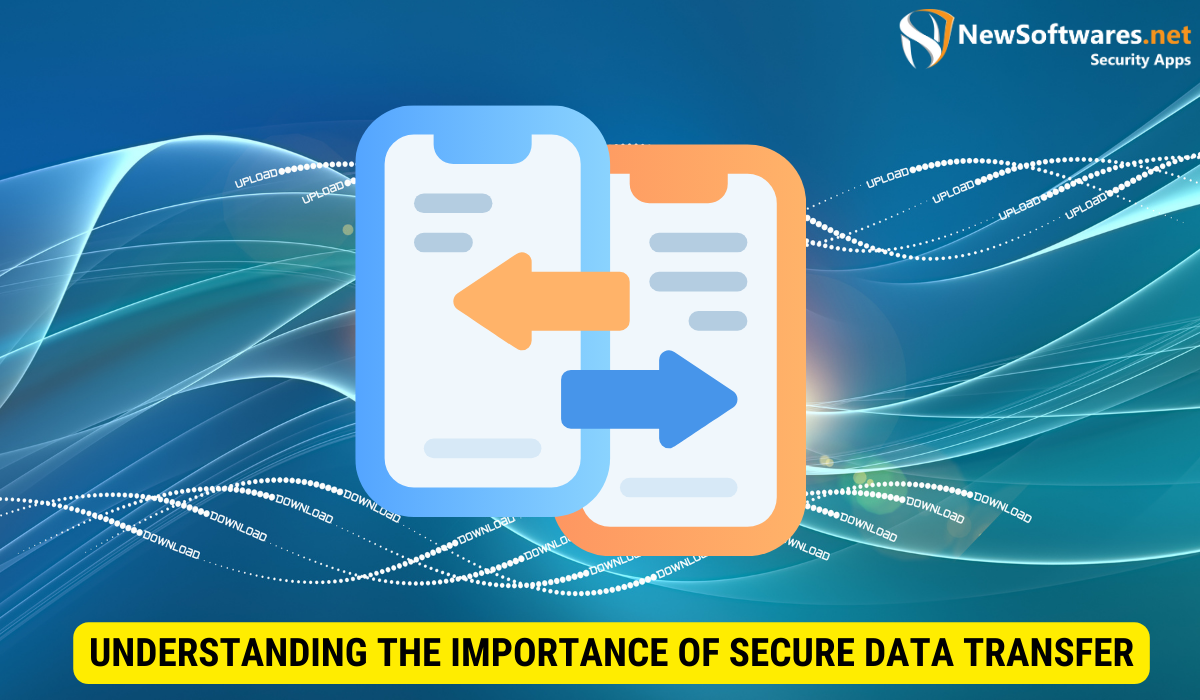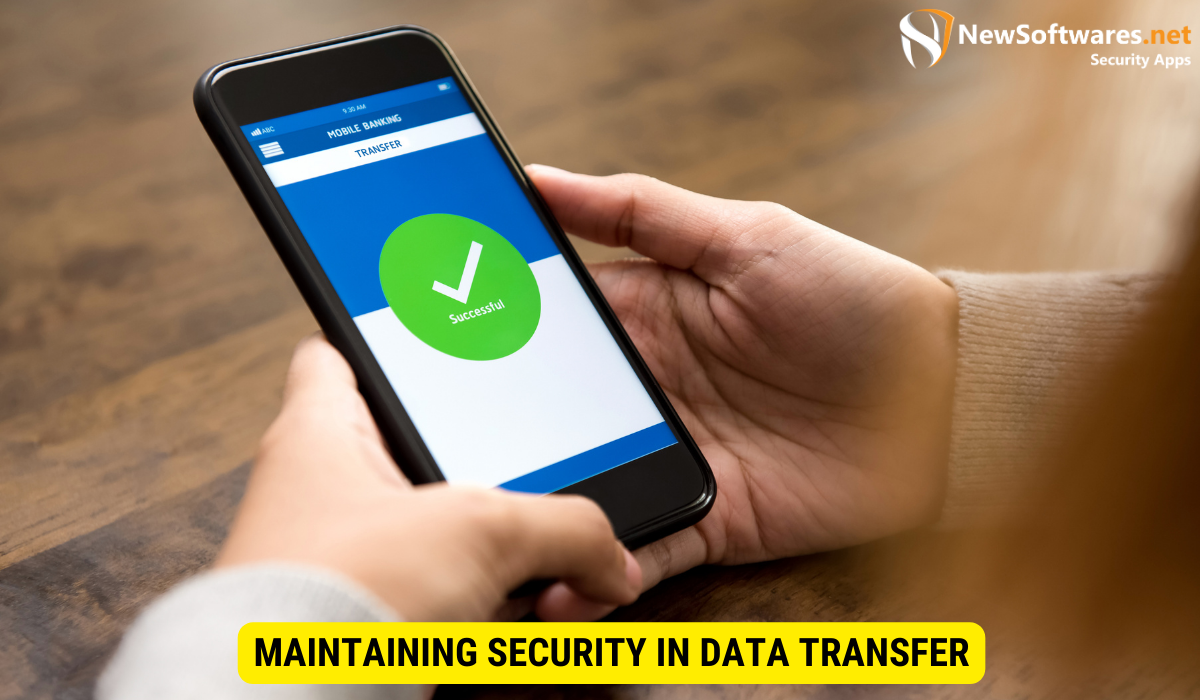Secure data transfer to web servers involves using methods like Secure File Transfer Protocol (SFTP), Hypertext Transfer Protocol Secure (HTTPS), and Virtual Private Networks (VPNs). SFTP offers encrypted file transfers, HTTPS encrypts data between browsers and servers, and VPNs create secure tunnels for data transit. These methods, combined with regular updates, patches, and continuous monitoring, ensure the protection of sensitive information during transfer.
Sharing data securely is of utmost importance in today’s digital age. With the increasing number of cyber threats and data breaches, understanding the strategies for secure data transfer is crucial for businesses and individuals. I will explore the importance of secure data transfer and key concepts, strategies, and methods that can help protect your sensitive information when transferring it to web servers.
Understanding the Importance of Secure Data Transfer

Data security is paramount in any organization that deals with sensitive information. When data is transferred from one location to another, it is vulnerable to interception and unauthorized access. Secure data transfer ensures that your information remains confidential, integral, and available only to authorized parties. Without proper security measures, sensitive data can be cooperated, leading to severe consequences such as financial loss, reputational damage, and legal repercussions.
Implementing secure data transfer practices is crucial for organizations to protect their valued assets and maintain the trust of their customers. Let’s delve deeper into the topic to recognize the significance of secure data transfer in today’s digital landscape.
One of the key hazards associated with unsecured data transfer is the interception of data by malicious actors. These individuals or groups can exploit the intercepted data for financial gain or to harm the organization. By implementing secure data transfer protocols, organizations can significantly minimize the risk of data interception and ensure the confidentiality of sensitive information.
In addition to data interception, unsecured data transfer also increases the chances of data corruption, unauthorized modification, and data loss. These incidents can have profound impacts on businesses and individuals alike. For businesses, compromised data can lead to disrupted operations, financial liabilities, and damaged reputations. Individuals may suffer from identity theft, financial fraud, and privacy breaches.
The Risks of Unsecured Data Transfer
Unsecured data transfer poses significant risks to businesses and individuals. One of the main risks is the interception of data by malicious actors who can exploit it for financial gain or to harm the organization. Additionally, unsecured data transfer increases the chances of data corruption, unauthorized modification, and data loss. Such incidents can have profound impacts on the affected parties, leading to compromised business operations, financial liabilities, and damaged reputations.
Furthermore, unsecured data transfer can also result in non-compliance with industry regulations. Many industries have strict data protection requirements that organizations must adhere to. Failure to obey with these guidelines can result in heavy fines, legal penalties, and loss of business opportunities.
Moreover, the lack of secure data transfer practices can hinder organizations’ ability to securely collaborate with remote teams and partners. In today’s globalized world, remote collaborations are becoming increasingly common. Secure data transfer enables organizations to share sensitive information with confidence, knowing that it will remain protected throughout the transfer process.
The Role of Data Security in Business Operations
Data security is not an isolated aspect of business operations; it is an integral part of a well-rounded cybersecurity strategy. When data is securely transferred, it ensures the confidentiality, integrity, and availability of critical information. This, in turn, enables secure remote collaborations, protects trade secrets, and safeguards customer data. Data safety also plays a crucial role in complying with industry regulations, mitigating cyber risks, and establishing a strong foundation for digital transformation initiatives.
Furthermore, data security is essential for protecting an organization’s intellectual property. Trade secrets, proprietary algorithms, and innovative ideas are valuable assets that need to be safeguarded. Secure data transfer practices help prevent unauthorized access to these assets, ensuring that they remain protected and contribute to the organization’s competitive advantage.
In conclusion, secure data transfer is of utmost importance in today’s digital world. It protects sensitive information, instills trust in customers, and helps organizations comply with industry regulations. By implementing robust data security measures, organizations can mitigate the risks associated with unsecured data transfer, safeguard their valuable assets, and maintain a strong cybersecurity posture.
Key Concepts in Secure Data Transfer
Before diving into the strategies and methods for secure data transfer, it’s essential to understand some key concepts that underpin data security.
Encryption and Its Role in Data Security
Encryption is a important concept in data security. It involves converting plaintext data into a format that is incomprehensible to unauthorized individuals, known as ciphertext. The ciphertext can be deciphered into plaintext only by individuals who possess the corresponding encryption key. Encryption algorithms provide a robust way to protect data during transmission and storage. By leveraging encryption, organizations can ensure that even if data is intercepted, it remains unreadable and useless to unauthorized parties.
Authentication and Authorization in Data Transfer
Authentication and authorization are essential components of secure data transfer. Authentication verifies the identity of the individuals or systems involved in the data transfer process. This can be achieved through various means, such as a username and password, biometric authentication, or multi-factor authentication. Authorization, on the other hand, determines the level of access and permissions granted to authenticated entities. By implementing proper authentication and authorization mechanisms, organizations can prevent illegal individuals from accessing sensitive data.
Strategies for Secure Data Transfer
Now that we have discovered the key concepts of secure data transfer, let’s delve into some strategies that can help safeguard your data.
Implementing Secure File Transfer Protocol (SFTP)
Secure File Transfer Protocol (SFTP) is a secure method for transferring files over the internet. It combines the capabilities of the traditional File Transfer Protocol (FTP) with the encryption provided by Secure Shell (SSH) protocol. With SFTP, data is encrypted during transit, ensuring its confidentiality. Furthermore, SFTP offers authentication mechanisms, preventing unauthorized access to the server or the transmitted data.
Utilizing Hypertext Transfer Protocol Secure (HTTPS)
Hypertext Transfer Protocol Secure (HTTPS) is a safe version of HTTP used for transmitting data over the internet. HTTPS utilizes the Secure Sockets Layer (SSL) or Transport Layer Security (TLS) protocols to establish an encrypted connection between the client & the web server. This encryption protects the integrity and confidentiality of the data exchanged between the user’s browser & the server. Implementing HTTPS ensures that sensitive information, for example passwords or credit card particulars, is encrypted and safe from eavesdropping or tampering.
Leveraging Virtual Private Networks (VPNs)
Virtual Private Networks (VPNs) provide a secure tunnel for data transfer over public networks, such as the internet. By encrypting the data and routing it through a VPN, VPNs ensure the confidentiality and integrity of transmitted information. VPNs add an extra layer of safety, especially when accessing web servers remotely. This technology is particularly useful for industries with remote employees or individuals who need to access web servers securely from public Wi-Fi networks.
Choosing the Right Data Transfer Method for Your Needs
When it comes to data transfer, choosing the right method is crucial. Different scenarios require different levels of security and can benefit from specific data transfer methods. Assessing your data security needs is the first step in selecting the appropriate method.
Assessing Your Data Security Needs
Start by identifying the sensitivity of the data you need to transfer. Are you dealing with personal identifiable information (PII), financial data, or intellectual property? Understanding the level of confidentiality, integrity, and availability required for your data will inform your choice of data transfer method.
Comparing Different Data Transfer Methods
Consider the pros and cons of different data transfer methods, such as SFTP, HTTPS, and VPNs. Evaluate factors like encryption strength, ease of use, cost, and compatibility with your existing infrastructure. Each method has its strengths and weaknesses, so it’s vital to select the one that aligns with your specific requirements.
Maintaining Security in Data Transfer

Establishing secure data transfer practices is not a one-time task. To ensure ongoing protection, certain measures need to be in place.
Regular Updates and Patches
Keep your software, operating systems, and security solutions up to date. Regular updates and patches often include important security fixes that address known vulnerabilities. By promptly applying updates, you minimize the risk of exploitation and ensure that your data transfer methods remain secure.
Continuous Monitoring and Auditing
Implement a strong monitoring and auditing system to detect any security incidents or suspicious activities related to data transfer. By actively monitoring your data transfer processes, you can identify any anomalies or breaches and take corrective actions promptly.
Key Takeaways
- Secure data transfer is crucial for protecting sensitive information from unauthorized access and interception.
- Encryption, authentication, and authorization are key concepts that underpin data security.
- Strategies such as SFTP, HTTPS, and VPNs provide secure data transfer methods for different scenarios.
- Choosing the right data transfer method depends on assessing your data security needs and evaluating the available options.
- Maintaining security in data transfer requires regular updates, patches, and continuous monitoring.
FAQs
Q: How does encryption protect data during transfer?
A: Encryption converts data into an unreadable format, ensuring that even if intercepted, the information remains secure and useless to unauthorized entities.
Q: What is the change between HTTP and HTTPS?
A: HTTP transmits data in plain text, while HTTPS encrypts the data using SSL/TLS protocols, ensuring confidentiality and integrity.
Q: Are VPNs necessary for secure data transfer?
A: VPNs add an extra layer of security, especially when accessing web servers remotely or when using public Wi-Fi networks.
Q: How often should I update my data transfer methods?
A: It is essential to regularly update your data transfer methods by applying patches and updates promptly to minimize the risk of exploitation.
Q: Why is continuous monitoring important for data transfer?
A: Continuous monitoring helps detect any security incidents or suspicious activities related to data transfer promptly, allowing for timely response and mitigation.
Conclusion
Secure data transfer is vital for organizations and persons who want to protect their sensitive information from unauthorized access and interception. By understanding the importance of secure data transfer, leveraging key concepts such as encryption and authentication, and implementing strategies like SFTP, HTTPS, and VPNs, you can ensure that your information remains safe during the transfer process. By continuously maintaining security measures through regular updates, patches, and monitoring, you can safeguard your data and mitigate the risks associated with unsecured data transfer. Stay vigilant, and prioritize secure data transfer to defend your sensitive information and maintain the trust of your customers and stakeholders.
